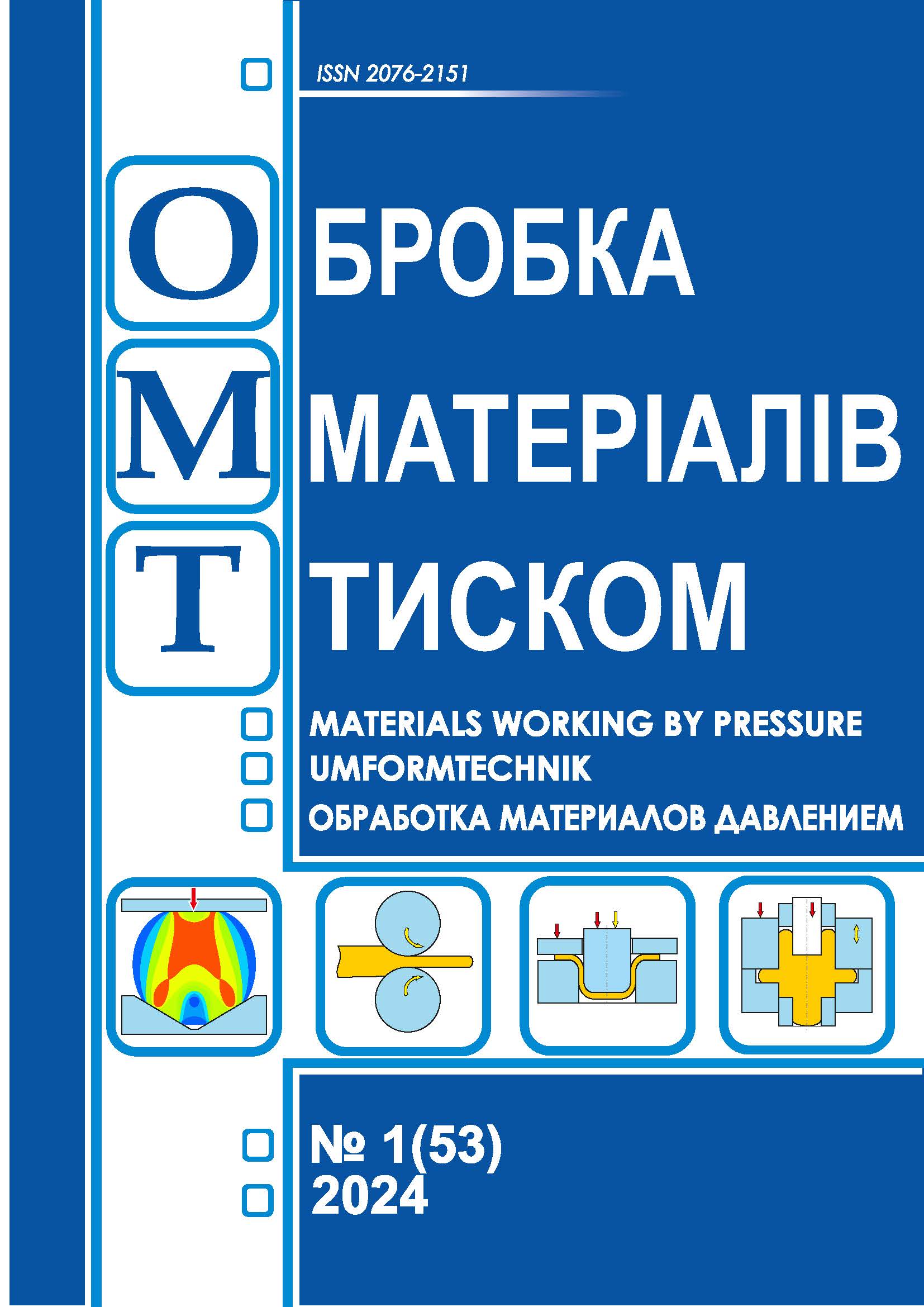Influence of heat treatment on mechanical properties and microstructure of pre-eutectoid steel for hot pressure treatment
DOI:
https://doi.org/10.37142/2076-2151/2024-1(53)197Keywords:
pre-eutectoid steel, hot pressure treatment, austenite, ferrite, pearlite, quenching, recrystallisation, microstructure, mechanical properties.Abstract
Dyachenko Yu., Fedorov M., Liutyi R.
Influence of heat treatment on mechanical properties and microstructure of pre-eutectoid steel for hot pressure treatment.
The process of formation of austenitic structure at continuous heating of pre-eutectoid steel for combustible treatment with pressure with initial ferrite-perlite structure is considered. The choice of optimal quenching temperature depending on the required level of mechanical properties in finished products is substantiated. The method of trial quenching to study the process of formation of austenitic structure, metallographic method of microstructure detection research and chemical etching were used. Determination of strength and impact toughness of low-carbon steel after quenching in water from temperatures 700...900°C. Has been carried out. It is shown that during heating of low-carbon steel recrystallisation of the initial ferrite-perlit e structure occurs in the interval Aс1 – Aс3 in two stages. The first stage consists in the formation of austenite grains inside the previously located pearlite grains. It occurs immediately after the temperature Aс1 is reached. The second stage consists of crushing of primary ferrite grains by nucleation of austenite grains in them and crushing of ferrite grains by penetration of austenite grains formed at the first stage of recrystallisation. Recrystallisation is completed when the primary ferrite grains disappear completely. To obtain a high complex of mechanical properties with the maximum level of impact toughness steel should be quenched from the temperature Ac3 - 10oC; with the maximum level of strength properties, respectively, with Ac3 + 10oC. The obtained data can be used for thermal treatment of pre-eutectoid steels, which will significantly increase its stability under conditions of variable and multiple heating and cooling of the working layer under hot pressure treatment.

